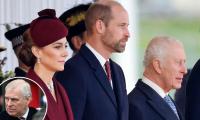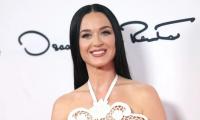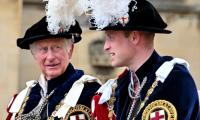“All that we borrowed up to 1985-86 was about $5 billion; we have paid approximately $16 billion and are still being told that we owe around $28 billion. The $28 billion came about because of the injustice in foreign creditors’ interest rates. If you ask me what the worst thing in the world is, I would say it is compounded interest.”– Olusegun Obasanjo, former president of Nigeria.
Nigeria ended up paying $44 billion over a loan of $5 billion. The case of Nigeria will resonate with what Pakistan’s economy is going through. As of January 2023, the public debt of Pakistan is around Rs54.94 trillion ($267 billion), which is more than 70 per cent of the GDP of Pakistan. Chasing these interest-laden loans, instead of structuring and generating in-house revenue through investments, has been the trend for the last seven decades, and it doesn’t seem to be going anywhere unless strict adherence to a formally revised policy is maintained that targets economic recovery above any political bias.
A good step has been the announcement of converting to Islamic Financial Instruments (IFIs) by 2028. Why and how the Islamic Banking system will help is up for an open debate, but let’s just list three things that promise to help the system: the absence of interest; non-acceptance of the speculative proposition; and profit-and-loss-sharing backed by assets. All three compel the system to stay safely streamlined, bringing the risk factor down to a minimum.
Islamic banking, however, is threatened on two fronts; one by the needs and demand of the already thriving conventional instruments which pressurize the Islamic banks to adapt and comply rather than go a different way, and second by the lack of innovation and research to introduce uniquely Islamic products.
The basic essence of Islamic economics came to the forefront in Egypt when Ahmed Al-Najjar’s saving and investment houses operating in Northern Egypt started financing poor farmers, on profit-and-loss sharing, and Mit Ghamar became the principal prompter of the resurgence of Islamic Banking. Malaysia followed with Tabung Haji – Pilgrims Management and Fund Board – that used the funds for investment in industrial and agricultural projects.
It has always been the lowest rung of the economic ladder that Islamic finance looks at first. The core belief is that welfare has to start at the ground and build upwards and that an inflated capitalistic dome may hide the crises underneath but will never find the strong pillars to stay stable on forever. Collapse, in that case, becomes imminent, as we have seen in 2008 and again this year.
In fact, historically, the rotation of Zakat came in as a blessing, to support the new immigrants in Medina to set up their businesses and to have an equitable chance at success, with the already established business houses of the state. Equity over equality is a hallmark of Islamic economics, and with the recent international trends of Diversity, Equity, Inclusion (DEI) swarming Twitter and Facebook, Islamic Economists like Abu Yusuf, Muhammad bin al Hasan, Abu Ubaid, Al Mawardi,eAl Ghazali, Ibn Taimiyah, and Ibn Khaldun, must be having a hearty laugh for they had realized the essence of DEI centuries ago.
Talking of welfare starting from the lowest rung, I would like to delve here into the impact of IFIs and their prospective and immediate beneficial effect. For example, Zakat collection in Pakistan can be between 1.6 per cent and 4.4 per cent of GDP, Kahf (1989). Targeted towards specific projects, this money can provide substantial development in communities lacking infrastructural needs. This is a good one-way investment that does not burden the recipient with any returns.
While alternative financial schemes have never been anything novel in the world of finance, the move to the Islamic model represents a big shift towards a system that values collateral and assets as the fundamental base for credit extension and project/development financing. This transformation becomes innovative because it warrants a complete change of the system from head-to-tail with no room for legacy practices or products.
Islamic financial systems and banking structures encompass human moral codes and the fixated interplay between markets and firms which emphasize non-exploitative behaviours towards borrowers and risk spread between transactions.
According to the State Bank of Pakistan’s report of April 2022, the largest ever growth in Islamic banking assets was recorded in CY21 which had surpassed the goal of Rs5 trillion to Rs5.5 trillion. Areas where Islamic finance can greatly benefit Pakistan and other lower developing economies can be affordable housing, SME setups, and Infrastructure development facilitation.
A point to note is that Islamic economics does not instigate the top one per cent control of all factors of production within society. It encourages wealth sharing and mutually exclusive transactional behaviours that add value to everyone’s economic output. In terms of the Rationality of Consumers, Islamic Economic mechanism does not depend on individualistic assumptions but on society’s collective actions where transparency between the state and its citizens is a conditionality for any transaction to take place.
Considering the factual insight into the workings of economics that is entwined into a system that beholds ‘Hilf-ul-Fudhul’, the pact to enhance society’s honour (Mohamad Jebara; Muhammad, the World-Changer), it becomes essential that the workings of the social and financial setup on micro and macro levels embody the same principles of equity, justice, and wellbeing for the transactions to become holistically productive and progressive.
Unlike the Western financial system, the Islamic one does not run on the premise of capturing or commanding society for its interest but rather focuses on supporting and enhancing the community for general well-being and development. It comes from the inside and works towards the outer ambit, ensuring the success of all. Additionally, Islamic economics, through the holistic welfare concept, is intertwined with facilitation and inclusion; therefore, the use of technology to increase financial inclusion and make financial services more accessible to all members of society is inbuilt. And as stated earlier, it also promotes environmental sustainability and the conservation of natural resources.
Pave the way it will, for Islamic Economics has that potential and it has proven it time and again, not only in the State of Medina, Umayyad empire, Abbasid empire, the Ottoman empire, but recently too in all countries where it has been implemented in its truest sense. However, there is a catch; it is intrinsically linked with the honest will of society and transparency of actions.
Unless we as a society also learn to prioritize the good of the country and community above individual interests, I am afraid we may have another face of debt-ridden transactions. Only the name will be different.
The writer is a former minister of state and Chairman, Board of Investment. He tweets @MAzfarAhsan
There are over 11 million Pakistanis settled abroad, out of which around six million work in Gulf and Middle East
This year alone, US Treasury would have to roll-over $10 to $14 trillion in maturing short-term debt
Tear gas no longer marks just protest sites; it paints entire cities as battlegrounds but then again, PTI did it first
Political structures and governance systems have been central to economic and social development
It is confirmed now 40 Pakistanis had died after boat of migrants had capsized in sea near Greece
Many people believe that in future, AI will play an even more significant role in their lives







